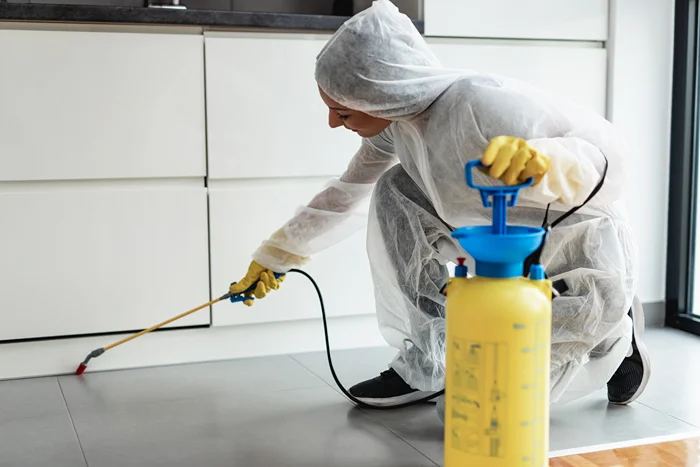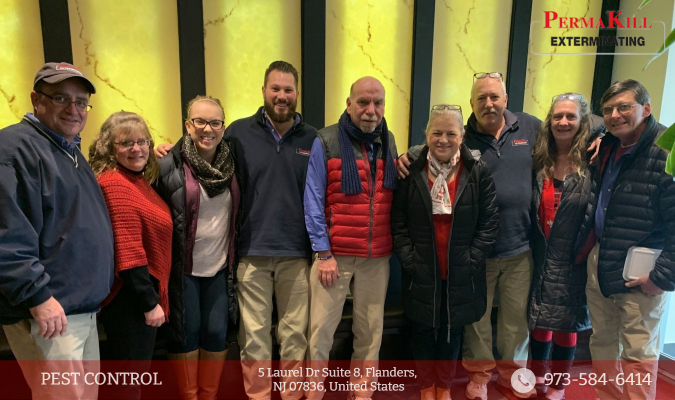


In the United States, termite problems are responsible for some of the most significant structural damage. Termites activity happens 24 hours a day, which explains why over $5 billion is spent yearly in the United States on termite repairs and infestation prevention. Experts suggest that your property can be treated against termite infestations in order to avoid significant termite damage.
So do you need to treat my property for termite infestations? Treating your property to solve termite problems with different types of anti-termite substances as well as other methods of termite infestation prevention treatments can greatly protect your property, and minimize termite damage. There can be at-home do-it-yourself remedies to help combat termite infestations, but getting your property professionally treated is the best way to protect your property.
There are known effective treatments available for fighting against termite infestations. The most common treatments known are various termiticides, borate foams and sprays, and a procedure called termite baiting.
There are available store-bought termiticides for home use. These chemicals are formulated to be toxic to both drywood termites and subterranean termites and are effective in exterminating a large number of these pests efficiently. There are commonly two kinds of termiticides available: repellent and non-repellent termiticides.
Termiticides are used to treat soil, wood, and other surfaces. These chemicals make the treated areas unappealing to termites, and it repels termites from getting into contact with treated surfaces. These are most effectively used in entryways, such as windows and doors, in order to keep termites from entering your property.
Non-repellent termiticides don’t have the same repelling effect as repellent termiticides. Instead, they are used in bait control systems to lure the termites into consuming termiticide-treated wood. This allows the toxins in these termiticides to effectively exterminate termites that come into contact with the chemicals.
Borate is also known as a boric acid mineral salt, with Boron as the active ingredient. This chemical extracted from the soil is usually used as borax, a boron-based chemical for household cleaning. Borax also has the ability to kill termites. When a termite comes into contact with borax, the chemical interferes with the insect's digestive system, effectively poisoning and eliminating the pest.
When wood is treated with borax sprays, termites eat at the wood and ingest tiny trace amounts of borax enough to kill them. Borate foams and sprays are low-cost insecticides that can be purchased from a pest control store for at-home use or can be used for commercial and professional pest control treatments for more large-scale infestations.
The effects of borax treatment are temporary. Only after 10 to 21 days of treatment, considerable effects can be observed. It’s vital to apply preventative and control measures on a regular basis. It's also necessary to keep treated wood safe from rain and moisture.
Professional pest exterminators use a process called termite baiting. These bait systems make use of a combination of termiticide and borate foams, as well as other chemicals to set bait stations that are strategically placed throughout the home.
Professional termite exterminators have the wealth of experience to determine the optimal places where termites frequently thrive. They place these bait control systems in specific areas, and, when termites consume the bait, they eventually return to their colonies. These substances are carried by the termites effectively spreading them to the rest of the termite colony.
Termite infestations put the structural integrity of your homes at risk. Infestations may start small and exponentially get worse. Eventually, these termite colonies grow and multiply to threatening amounts. Termites eat at the wood in your home 24 hours a day, 7 days a week. Termite activity is constant, which means they need to be taken control of as soon as possible.
Termites silently cause damage. Many homeowners unknowingly have their properties destroyed by termites. The most invasive termites are the Formosan termites and subterranean termites. Before they know it, the structural integrity of their home has already been compromised.
Burrowing into the wood, termites make no sound and makes it harder to notice that they’re already causing damage. Termites also burrow within the wood and weaken the wood from the inside. While the wood may look normal, it’s only a matter of time until it’s destroyed.
Termites may be more difficult to exterminate compared to other pests. These insects thrive in colonies that reach up to millions at a time. Exterminating a few of them at a time may be ineffective because they just multiply faster than they’re killed. Proper treatments and pest control systems should be in place for more severe infestations.
Termites look for mainly two things: wood and water. Untreated wood is also an invitation for these pests to infest your home. These insects feast on wood, which can range from structural supports to furniture and even picture frames.
Water that’s stagnant or leaking can provide termites with an environment where they can thrive. Water may seep into the foundations of buildings, resulting in moist soil. Termites, particularly Formosan subterranean termites and eastern subterranean termites proliferate quickly in areas with moisture-rich soil.
It’s critical to inspect and follow up on any potential indicators of a termite infestation that you may see in order to keep your property secure from termites. This entails evaluating your home's outside foundation, basement, attic, and any crawlspaces you may have on a regular basis.
You should also remove any contact between wood and soil. Termites benefit from earth-to-wood contact because it provides them with readily available food, moisture, and shelter. At least 6 inches above the ground level is recommended for doors, window frames, and other possible entryways.
Aside from what was mentioned, allow no moisture to collect anywhere in the house. Make sure that any outside fountains, ponds, or faucets don’t leak and are adequately covered. Repair any existing leaks and determine whether the soil around these places is retaining moisture.
Lastly, remove any clutter or debris, because termite infestations are more frequent in homes that store woodpiles like that of firewood. Termites are attracted to firewood, lumber, cardboard, and newspaper, among other things. By removing these piles, termites will no longer have access to food sources.
It’s generally the best practice to have professional termite control services assess and treat your property as it’s being built, in order to prevent termite infestations. But in cases where termite infestations already exist, look out for these signs which can signal when it’s time to call professional help:
Professional termite control services can handle infestations ranging from even before they begin, up to the most severe cases.
Soil treatments mainly address the nests of termites as it directly attacks the habitat of these pests. Because most invasive termites live in the soil, soil treatment is one of the most efficient termite control strategies. Professional pest control services spray a concentrated and precise amount of termiticide barrier to the exterior of your property. Termites will come in contact with this barrier and the chemical will exterminate them.
Wood treatments address the food source of termites. This procedure allows the treatment of specific items, such as furniture, walls, or other surfaces. Treating the wood will infuse it with termiticides that are toxic to termites when consumed. It is recommended to treat the woods in your home as it’s being built.
Bait control systems address a mixture of the habitat and food sources of termites. These are strategic procedures that are used by professional pest control services. They make use of a mixture of chemicals, such as termiticides, borate solutions, and other chemicals in specific areas of your home. These professionals can determine the best areas to place these bait for the termites to come into contact with, and bring the toxic chemicals back to their nests.

A combination of soil treatments, wood treatments, and bait control systems is effective in combating termite infestations. These treatment methods are recommended to protect your property against termite infestations, as well as other techniques to keep infestations at bay.
Professional pest control service providers such as PermaKill Exterminating offer these services to effectively prevent termite infestations and rid your home of termites for good. Get in touch with PermaKill Exterminating now through our number (973)-584-6414 or by visiting our website.